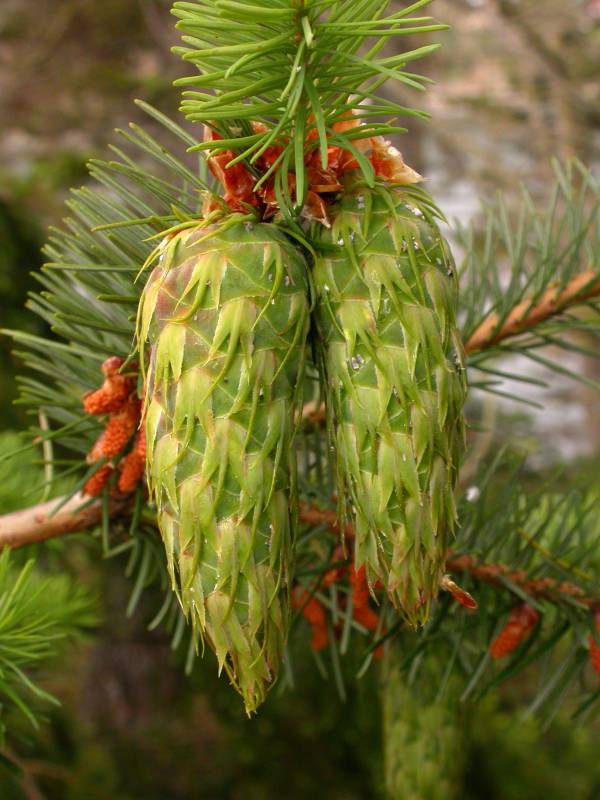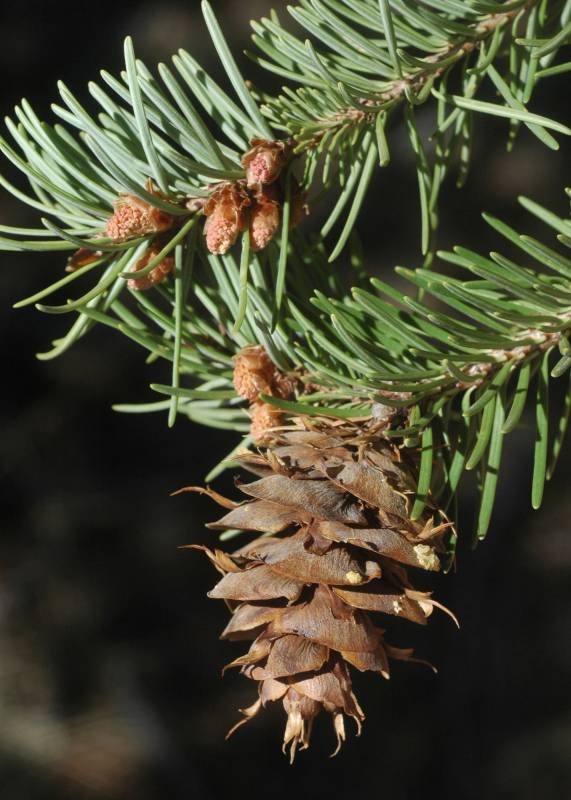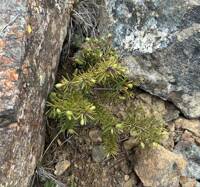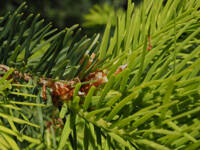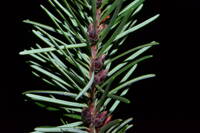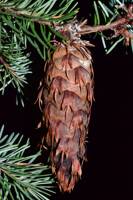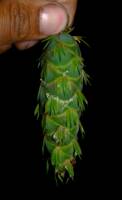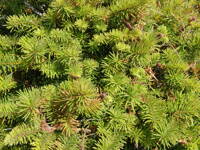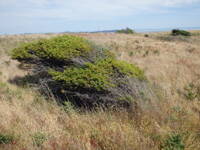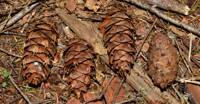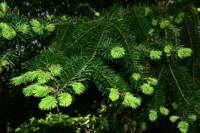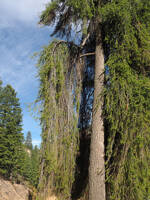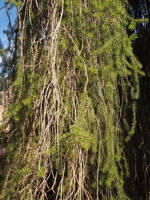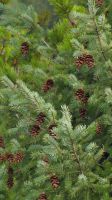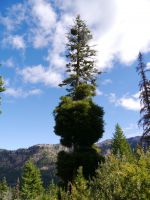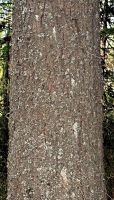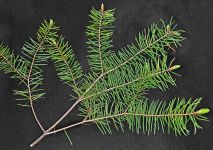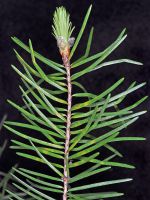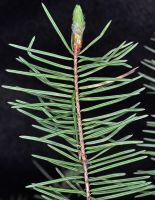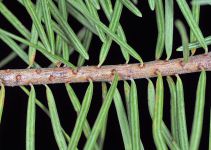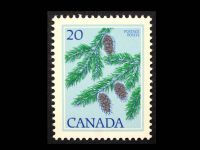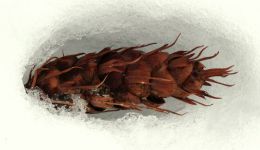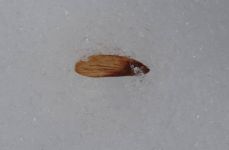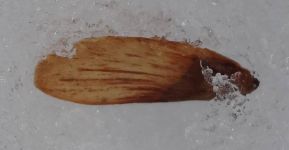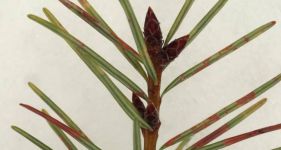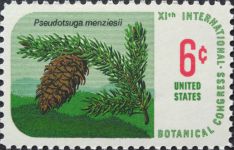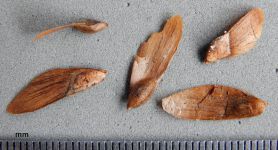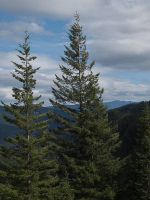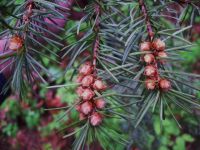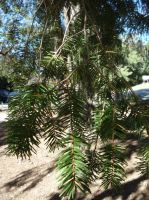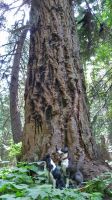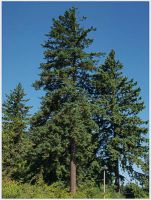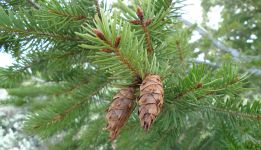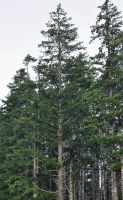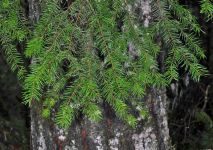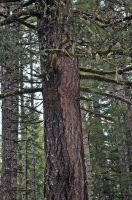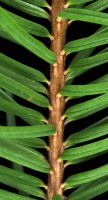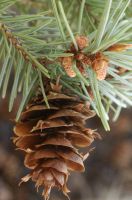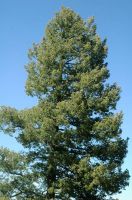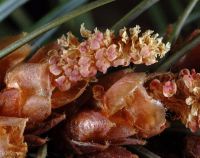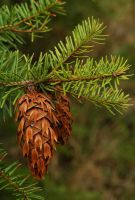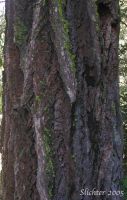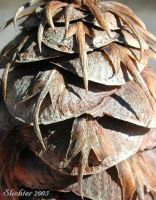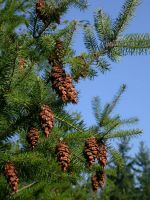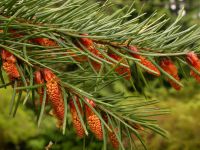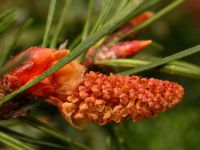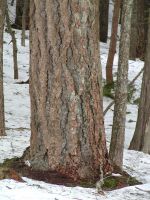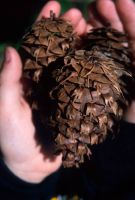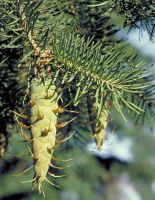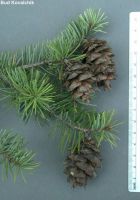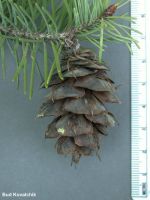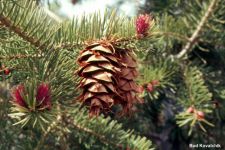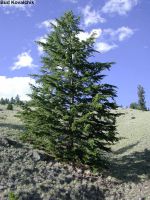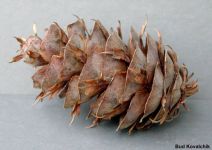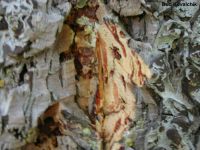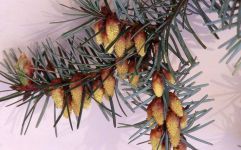Distribution: Widely distributed in forested areas on both sides of the Cascades crest in Washington; British Columbia to California, east to Alberta and Colorado.
Habitat: Moist to dry areas from sea level to mid-elevations in the mountains, occasionally to timberline.
Cones: April-May
Origin: Native
Growth Duration: Perennial
Conservation Status: Not of concern
Pollination: Wind
Giant forest trees up to 90 m. tall, with drooping branches and erect leader.
Bark dark brown, rough, ultimately very thick; branchlets pubescent for several years.
Needles 2-3 cm. long, yellow-green to bluish-green, retained 7-10 years; two white stripes on the underside of the needles, none above.
Staminate cones sessile, 6-10 mm. long, yellow to reddish; ovulate cones ovoid, deciduous as a unit, 4-10 cm. long, pendent, yellowish- to purplish-green when young, becoming reddish-brown, soon deciduous; the bracts long-exerted, 4-7 mm. broad across the 3-lobed tip, the middle lobe much the longest.
Publication: Bol. Soc. Brot. ser. 2, 24: 74. 1950.
Abies mucronata Raf.
Abies taxifolia Poir.
Pinus taxifolia Lamb.
Pseudotsuga douglasii (Lindl.) Carrière
Pseudotsuga mucronata (Raf.) Sudw.
Pseudotsuga taxifolia (Lamb.) Britton
-
var. glauca – pino real Colorado, Rocky Mountain Douglas-fir
 Occurring from Okanogan County to the eastern counties in Washington; central British Columbia to Mexico, east to the Rocky Mountains.
Occurring from Okanogan County to the eastern counties in Washington; central British Columbia to Mexico, east to the Rocky Mountains. -
var. menziesii – coast Douglas-fir
 Occurring from the Pacific coast to the east base of the Cascades in Washington. British Columbia to California, east to Washington, Oregon, and western Nevada.
Occurring from the Pacific coast to the east base of the Cascades in Washington. British Columbia to California, east to Washington, Oregon, and western Nevada.
PNW Herbaria: Specimen records of Pseudotsuga menziesii in the Consortium of Pacific Northwest Herbaria database
WA Flora Checklist: Pseudotsuga menziesii checklist entry
OregonFlora: Pseudotsuga menziesii information
E-Flora BC: Pseudotsuga menziesii atlas page
CalPhotos: Pseudotsuga menziesii photos

